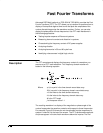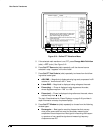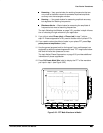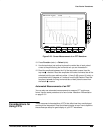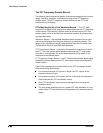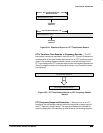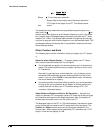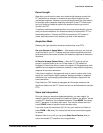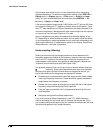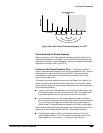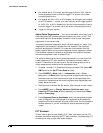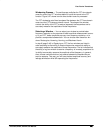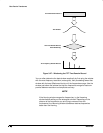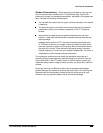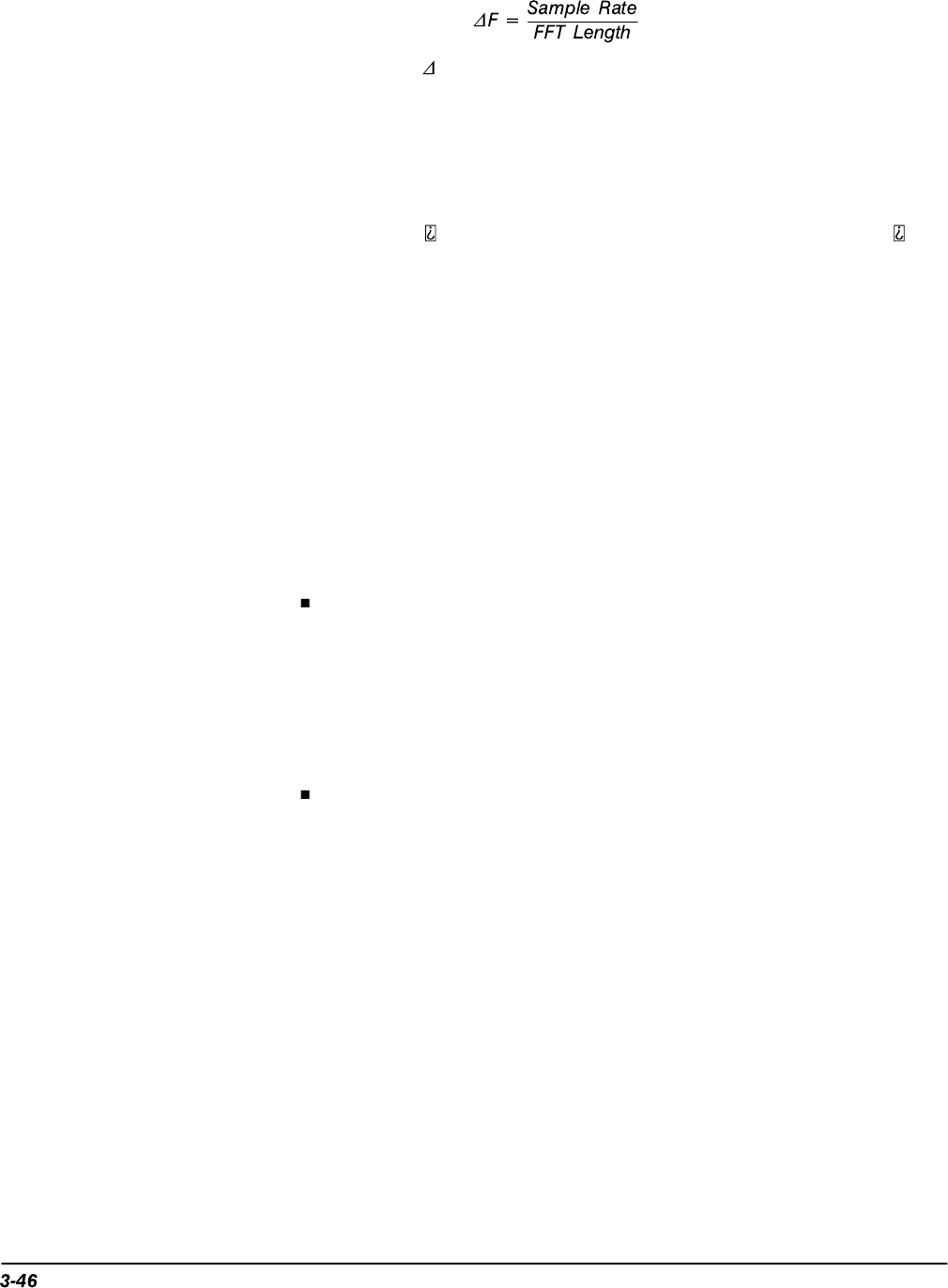
Fast Fourier Transforms
Reference
Where: F is the frequency resolution.
Sample Rate is the sample rate of the source waveform.
FFT Length is the length of the FFT Time Domain wave-
form record.
The sample rate also determines the range these frequencies span; they
span from 0 to
the
sample rate is often referred to as the Nyquist frequency or point.) For exam-
ple, a sample rate of 20 Megasamples per second would yield an FFT with a
range of 0 to 10 MHz. The sample rates available for acquiring data records
vary over a range the limits of which depend on your oscilloscope model. TDS
oscilloscopes display the sample rate in the acquisition readout at the top of
the oscilloscope screen.
Offset, Position, and Scale
The following topics contain information to help you display your FFT proper-
ly.
Adjust for a Non-Clipped Display — To properly display your FFT wave-
form, scale the source waveform so it is not clipped.
You should scale and position the source waveform so it is contained on
screen. (Off screen waveforms may be clipped, resulting in errors in the
FFT waveform).
Alternately, to get maximum vertical resolution, you can display source
waveforms with amplitudes up to two divisions greater than that of the
screen. If you do, turn on Pk-Pk in the measurement menu and monitor
the source waveform for clipping.
Use vertical position and vertical offset to position your
source
waveform.
As long as the source waveform is not clipped, its vertical position and
vertical offset will not affect your FFT waveform except at DC. (DC
correction is discussed below.)
Adjust Offset and Position to Zero for DC Correction — Normally, the
output of a standard FFT computation yields a DC value that is twice as large
as it should be with respect to the other frequencies. Also, the selection of
window type introduces errors in the DC value of an FFT.
The displayed output of the FFT on TDS oscilloscopes is corrected for these
errors to show the true value for the DC component of the input signal. The
Position and Offset must be set to zero for the source waveform in the
Vertical menu. When measuring the amplitude at DC, remember that 1 VDC
equals 1 V
RMS
and the display is in dB.



